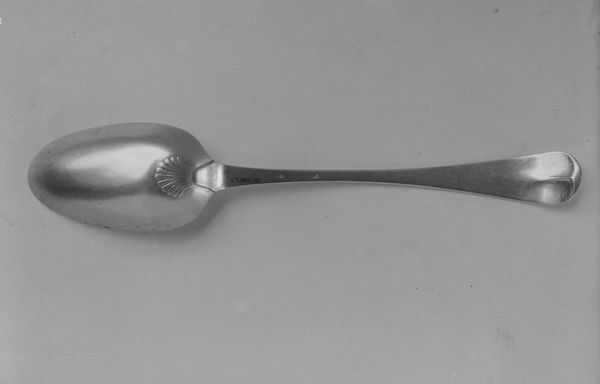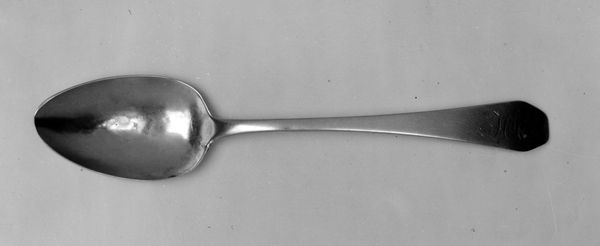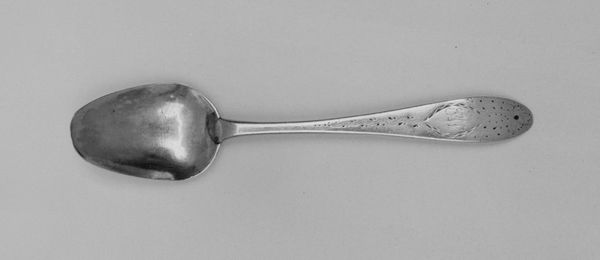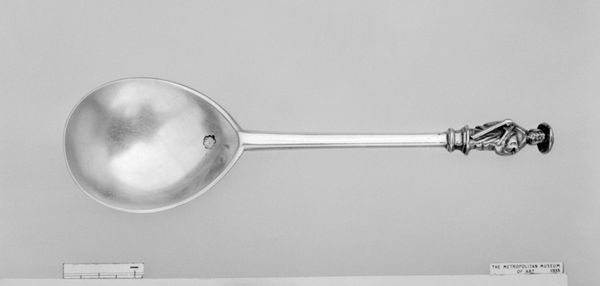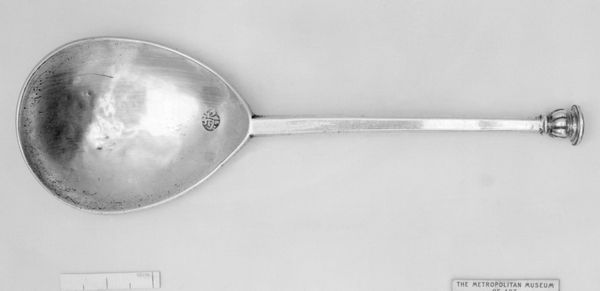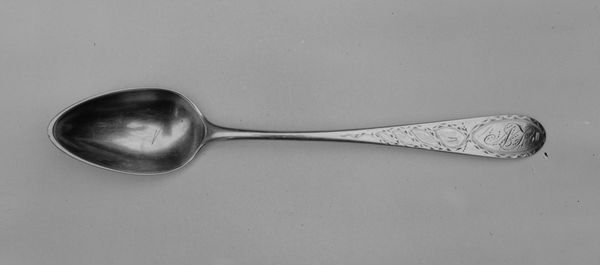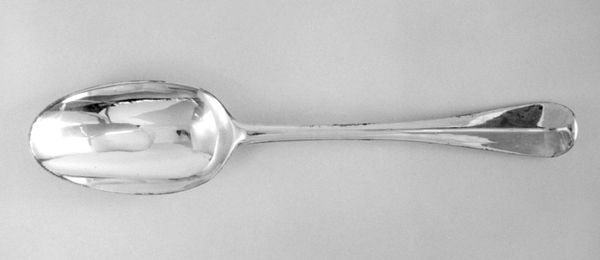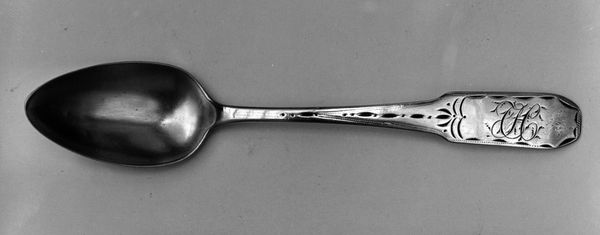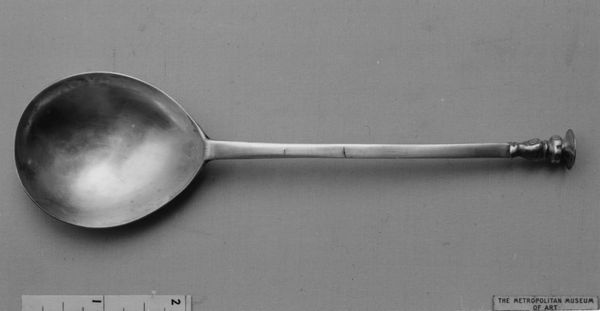
silver, metal
#
silver
#
neoclassicism
#
metal
Dimensions: L. 8 1/4 in. (21 cm)
Copyright: Public Domain
Curator: Right now, we're looking at a simple yet fascinating object. It's a silver spoon crafted between 1770 and 1800, attributed to Joseph Moulton. A modest example of Neoclassical style, currently residing at The Metropolitan Museum of Art. Editor: A spoon! Well, my initial reaction is…domestic. A quiet kind of beauty. It gleams in a very particular way. I find it evocative – it makes me think of soups and silent breakfasts by candle light, though perhaps that's overly romantic. Curator: It's far from overly romantic, in fact, I appreciate you saying that. I think it grounds it. Everyday objects often reflect more than mere functionality; the way they’re produced tells its own story. The labor involved, the access to silver as a resource, and who gets to use it – each is laden with significance. Editor: Precisely! Think of the hands that crafted it, the table settings it adorned. And of course, that distinct glimmer only metal has - an almost liquid quality frozen solid. It seems to contain echoes, doesn't it? Curator: Yes, silver production during that era involved complex processes – extraction, refinement, craftsmanship, each stage with its specific social implications and power structures that speak volumes about class and consumption in late 18th-century society. Editor: I wonder about the person for whom this was made. Did they treasure it, was it part of an entire silverware collection passed down through generations? Its clean design strikes me as quietly assertive; understated, but undeniably elegant. I notice there are markings towards the spoon’s end... an "E" above a number "2"? Any idea what they represent? Curator: Monogram, likely – ownership, provenance. Personalization of domestic goods were certainly in fashion then. These small additions reflect both status and an individual connection to something industrially made. A detail I find particularly thought-provoking! Editor: It truly captures how much stories even the most commonplace objects can contain! Curator: Indeed. It underscores how the material and the methods used shape our everyday existence in very subtle and enduring ways.
Comments
No comments
Be the first to comment and join the conversation on the ultimate creative platform.
